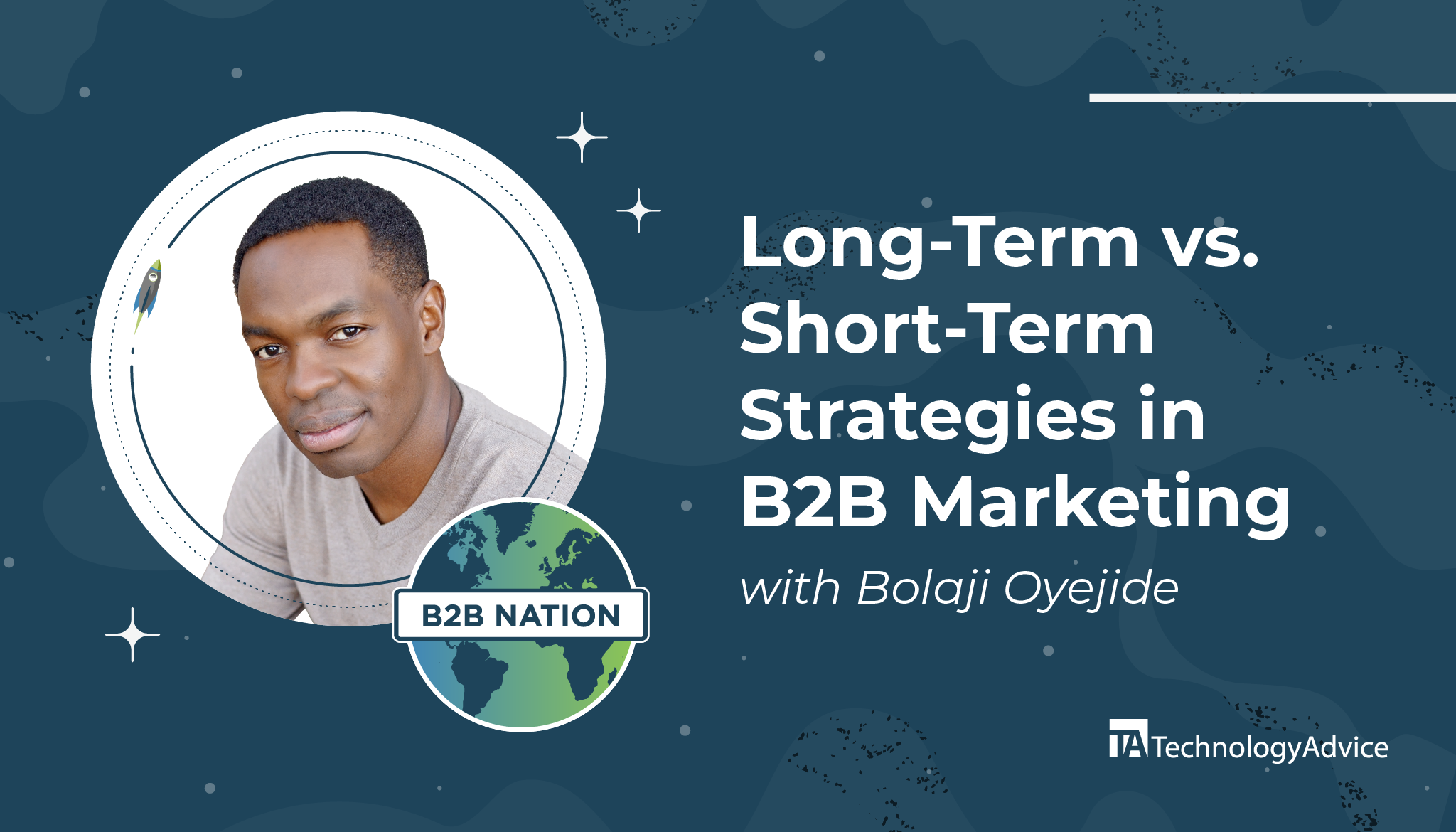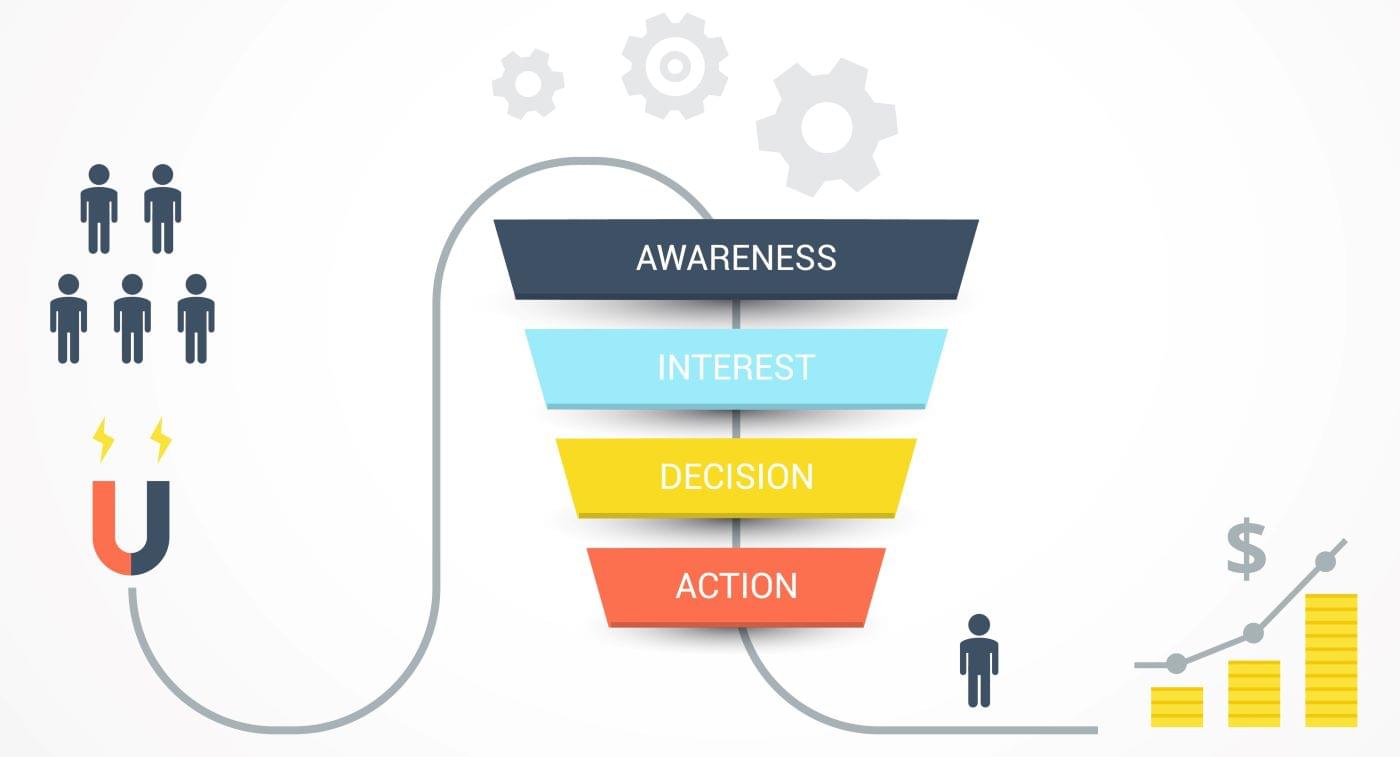Buyers complete up to
60 percent of their purchase cycle for SaaS products before contacting the vendor. That means that most of your interested cybersecurity leads only identify themselves when they compare options. This can make it can feel like all buyers already know your brand. But if you only look at your BOFU lead capture assets to measure the success of your campaigns, you miss over half the story.
Perhaps the most demanding part of today’s sales funnel is that it requires you to be searchable at all points. Buyers don’t all find your brand neatly at the top of the funnel. You need to be ready to capture buyer attention and gain brand followers at any stage.
Cybersecurity buyers may only make themselves known at the end of the buying process, but they still need you to produce the full-funnel content that keeps your tool top of mind. You still need to produce, maintain, and promote those TOFU and MOFU resources, even if buyers don’t identify themselves until later.
TOFU: threat awareness, establishing a need
TOFU cybersecurity assets often examine new cybersecurity threats and deliver news on recent breaches. While threat awareness gets lots of clicks, focusing entirely on these types of issues can
cause problems for cybersecurity marketers. Think of how you can expand away from threat awareness and into other ways of establishing a need for individual contributors, department heads, and C-levels.
Evaluate the content
Much of your TOFU content should educate people. What fresh take on cybersecurity trends, thought leadership on cybersecurity implementations, or way of defining security in different businesses can you expand upon?
And remember, content isn’t only blog posts and white papers. Try videos, Slideshare presentations, webinars, online courses, and podcasts to broadcast your ideas.
Create a clear path down the funnel
We know that buyers in the awareness stage don’t need to purchase right away, and they probably aren’t ready for a demo or free trial, either.
For these assets, a call to action (CTA) that offers other pieces of educational content within that or similar subject matter works well. Try a CTA to your newsletter on these pages as well. At this point, you want them to stick around and experience content in their interest area that you’ve produced. Carefully choose what you offer, where you offer it in the current asset, and how it relates to the overall funnel.
Evaluate these metrics
- Total traffic: While total traffic may feel like a vanity metric, it is useful at this stage to understand where potential buyers show current interest.
- Average time on page: Are your readers actually reading your 5000 word article, or do they click off somewhere around minute one? How can you update your assets to provide the most important information first?
- Average pages per session: The number of pages that a user navigates to on your site indicates how deeply they’re engaged with your content and — to some extent — how useful they find the assets you’ve provided.
- Newsletter signups: Should not be a first priority metric, but to some extent this shows how interested users are by the subject matter.
Pro Tip: In your website analytics tool, make a
content grouping or
regular expression of your TOFU content and view these metrics for just that content.
MOFU: product options and comparisons
The MOFU is where you’ve got to be careful with your sales speak. When you make a correlation between how your product can solve a problem and the essential need of the buyer, you run the risk of pushing the hard sell too early.
Evaluate the content
MOFU content should include assets along these themes:
- How your product compares to similar products
- What skills users need to implement your tool
- In-depth analysis of product differentiators
- Webinars that show your product solving problems
Create a clear path down the funnel
Provide the reader with a CTA to set an appointment, schedule a sales call, demo the product, sign up for a free trial, or engage with another piece of content.
How can you repurpose or reuse your content to increase your lead generation efforts? Instead of featuring the MOFU content on your website, how many different
content syndication campaigns do you add it to? Do you offer it in exchange for newsletter sign ups or as a follow-up from a webinar?
Evaluate these metrics
We often mistake MOFU engagement for readiness to purchase. Evaluate these metrics alongside the BOFU metrics and one another. Even better, put together a lead scorecard in your CRM that tracks buyer readiness based on several engagement metrics.
- Downloads: Asset downloads, especially those in exchange for contact information are a great engagement metric, but they shouldn’t be your only indication of engagement and readiness to purchase.
- Free tool usage: Again, this shows interest, but it may only show interest in the free tool.
- Event sign-up and attendance: Webinars, in-person events, live online events, and any time you have individuals gather to talk about product-related issues and problem-solving.
BOFU: purchase decisions
Your sales-enablement assets live in this part of the funnel. Use information from your discussions with sales reps and individual buyers to produce and repurpose content. Consider making assets that speak to objections, managing budgets, and implementation, as well.
Evaluate the content
Remember that in many organizations, an additional buyer decision-maker will appear in the final stages of the purchase process. Whether it’s the CEO, CTO, or a director, this individual will need much of the same convincing that the original buyer needed, but faster and more condensed. Ask these questions of your assets:
- Are you ready with overview data, testimonials, white papers, and quick infographics to convince this decision maker?
- What pricing information do you provide?
- Are there places where expert-generated content or consulting would improve your process?
- Where can your developers help sales?
Create a clear path down the funnel
Your assets should show a clear path to closing while qualifying the lead. Match these assets with a phone number, a Get a Quote button, or a contact form that anticipates the buyer’s need. Use this opportunity to gather the information you need to close the deal.
Evaluate these metrics
- Appointments, demos, free trial closure rate: How many of these result in a closed deal?
- Customer lifetime value (CLV): How much each customer spends with you over their time with your brand.
- Net promoter score (NPS): How likely are your customers to recommend you and your brand?
- Cost per opportunity: What are you spending to get a meeting with a buyer?
- Average deal size: Are your resources attracting the kinds of deals you expect?
The TL;DR
To stay afloat in the digital deluge, you have to
- Understand your funnel. How do your buyers interact with your website, what needs do they have, and why do they come to you, as a vendor?
- Engineer an optimal funnel that smoothly drives customers through touch points.
- Build workflows in your CRM and marketing automation tools that match your funnel.
- Be meticulous about your content assets. Map them, optimize them, understand them and how they fit into each portion of the funnel.
Next steps
Understanding your content doesn’t have to be more complicated than tracking it in a spreadsheet (here’s a great
content scorecard from Content Marketing Institute). Make the spreadsheet searchable and filterable for optimum use. Having an asset library is a helpful touchpoint for knowing the types of assets you own and can share with your sales department.
Once you understand your funnel and your content, think about alternative ways you can attract potential buyers to your brand. The
content syndication campaigns TechnologyAdvice provides for TOFU and MOFU assets can expand your audience quickly and uses your existing assets to drive traffic to your brand.



